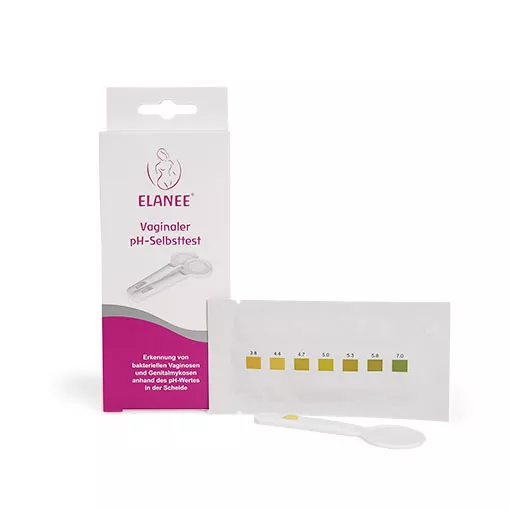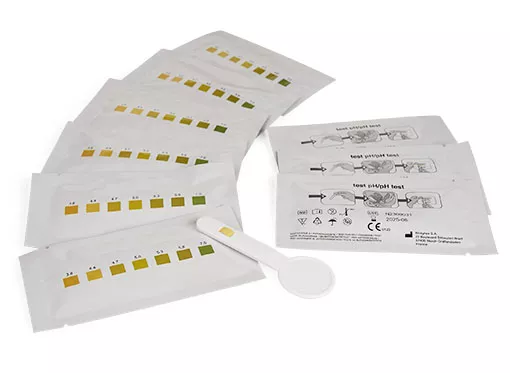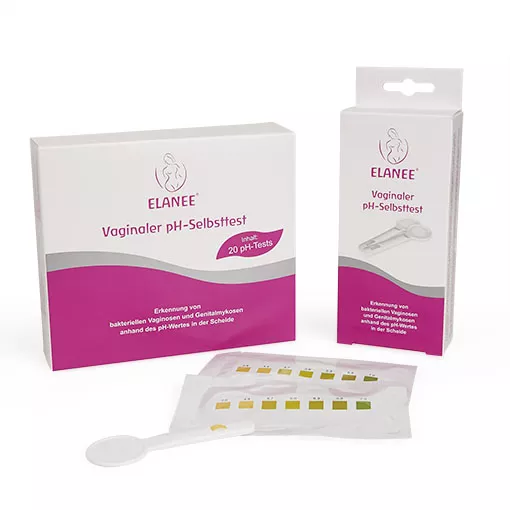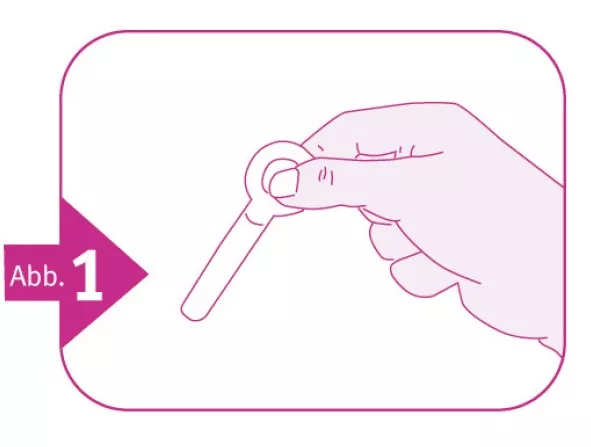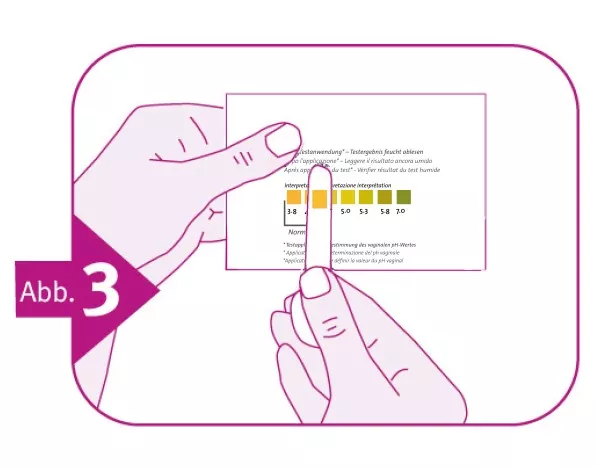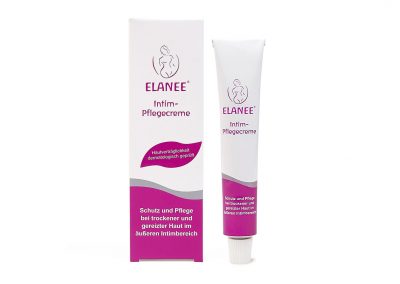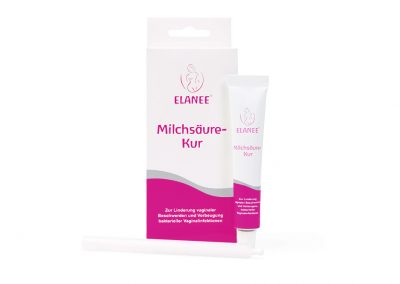Vaginal pH self-test
Recognize bacterial infections or genital mycosis based on the pH level in the vagina
Short & Compact
- To assist in the early detection of bacterial vaginal infections and to help prevent premature births* by measuring the vaginal pH-value
- Individually packaged vaginal applicator with integrated pH test strip
- Quick, hygienic and simple measurement at home
- Applicator: plastic; indicator paper with pH scale 3.8 – 7.0
- 2 or 20 pieces
This might also interest you:
Product information
Our ELANEE vaginal pH self-test is a simple and hygienic quick test for self-application at home, which can be used to determine the vaginal pH value of the vaginal environment. The result helps in the early detection of bacterial vaginal infections and genital mycoses.
The test is an approx. 8 cm vaginal applicator with an integrated pH measuring strip with a measuring scale of 3.8 – 7.0 pH. The color scale ranges from orange (3.8 pH) to yellow-green (5.0 pH) to dark green (7.0 pH).
The test strips of our vaginal pH self-test are non-bleeding, i.e. they do not release any colorants or other substances and may therefore be inserted into the vagina.
Pharmacy central number (PZN): 11561960
Areas of application
The use of our vaginal pH self-test is useful in the following cases, among others:
– If bacterial vaginosis is suspected due to symptoms such as itching or burning in the inner genital area, increased discharge with an unpleasant odor or pain during sexual intercourse and/or urination
– After anti-infective therapy (e.g. treatment with antibiotics)
– As part of preventive check-ups during pregnancy*
– With a known risk of premature birth*
– After sexual contact with a new partner
– Before and after vaginal surgery (for injuries that have not yet completely healed, only after consultation with a doctor).
*Bacterial vaginosis is responsible for approx. 30% of miscarriages/preterm births.
As vaginosis can develop within a few days, it makes sense to check the pH value 2 – 3 times a week, especially for women who have already had a miscarriage/preterm birth.
As soon as the test shows the first signs of a result deviating from the norm (> 4.4 pH), a visit to a doctor is recommended.
Application:
1. wash your hands before taking the test.
2. open the box, take out a test and open the plastic bag. Do not open the bag until the test is pressurized.

3. hold the applicator by the grip ring between your thumb and index finger. The thumb must always be on the side of the vaginal applicator. Do not touch the test measuring area.
4. avoid contact of the pH measuring area with other liquids.
5. sit down with your legs apart or place one foot upright on the toilet seat or another stable surface.
6. carefully pull the labia apart with your free hand to gain access to the vagina.
 7. Gently insert the applicator 1 to 3 cm into the vagina (no further than the grip ring allows), as you are used to doing with a tampon. Inserting the vaginal applicator is completely painless.
7. Gently insert the applicator 1 to 3 cm into the vagina (no further than the grip ring allows), as you are used to doing with a tampon. Inserting the vaginal applicator is completely painless.8. press the applicator against the posterior vaginal wall (on the side of the rectum) for about 10 seconds to moisten the pH measurement area sufficiently. The measuring area must be sufficiently moistened for a correct evaluation of the test.

9. Then gently pull the applicator out of the vagina.
10. read the result directly. The result can no longer be interpreted after 30 seconds.
Always use the color scale on the packaging to interpret the test.
Further information & tips
In our blog section, we provide lots of information on how the pH value is measured and on topics such as imbalances in the vaginal environment, bacterial vaginosis and the structure and function of the intimate area.
What causes the pH value in the vagina to be too high?
Possible causes of a vaginal pH value that is too high include taking antibiotics, excessive/incorrect intimate hygiene, hormonal fluctuations due to the menopause or the contraceptive pill, menstruation, sperm or postpartum discharge.
What can be done if the pH value of the vagina is too high?
We recommend our lactic acid treatment to relieve vaginal discomfort and prevent recurring vaginosis.


